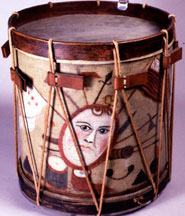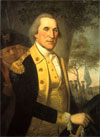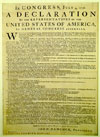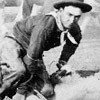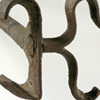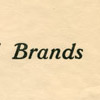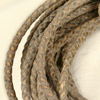
| A. Lesson Unit Plan Title |
|
|
|
| B. Overview of this Collection-Based Lesson Unit Plan |
|
|
|
| C. Museum Collections, Similar Items and other Materials Used in this
Lesson Unit Plan |
|
NOTE: List the museum collections: objects, specimens, historic photographs, and historic documents such as journals, diaries, letters, receipts, and lists, oral histories, diagrams, and maps from the Park Museum collection for each lesson used in this lesson unit plan.Captions must include object name, catalog number, material, and measurements [take from the Park virtual exhibit or catalog]Provide additional information such as place of manufacture, who used the item, and how it was used, as well as cultural significance, if available.
|
Tip: Don’t use too many museum objects. It’s more effective to use fewer and more ‘representative’ objects that tell a story to convey the lesson theme and develop intensive and creative activities. |
Similar items locally obtained. Identify things that the teacher can acquire locally and use in the classroom that are similar to the museum objects identified in section C. These items should be similar to the museum object or fill the same function. They are essential to the collection-based lesson unit plan. Unlike the real museum object, these items can be safely handled by the students. They substitute for the museum object. For example, a panama hat the teacher owns or can find at a local flea market, can be used in a lesson on Frederick Douglass that uses Mr. Douglass’ panama hat and a lithograph portraying him wearing such a hat in Haiti. These items can also be added to your classroom museum.
Other materials:
- Other historic photographs and documents that are outside of the park’s museum collections, only if the park’s museum collections need to be supplemented. Only use those from public domain sources such as the Library of Congress or National Archives and Records Administration web sites.
- Forms and Charts: List each chart or diagram to be used in the class. Try to use the “How to Read an Object” chart at http://www.nps.gov/museum/tmc/docs/How_to_Read_an_Object.pdf” as a creative class activity.
- Books
- Writing materials including special paper varieties, bindings for journals, and special format books.
- Art-making materials including varieties of paper, paints, markers, oil pastels, adhesives, and 3-D sculptural materials.
- Science and math materials.
Enter the specific applicable national educational standard by number and title. Select from the National Education Standards at http://www.education-world.com/standards/ or http://cnets.iste.org/currstands. National Park Service Teaching with Museum Collection lessons are often multidisciplinary; so include a specific standard for each relevant discipline as appropriate. Include the URL of the standard. Tie all activities and extension activities to the applicable standards.
For:
Social Sciences:http://www.education-world.com/standards/national/soc_sci/us_history/5_12.shtml
English: http://www.education-world.com/standards/national/lang_arts/english/k_12.shtml,
Arts Education:http://www.education-world.com/standards/national/arts/index.shtml.
For example, enter the applicable standard such as:
NSS-USH. 5-12.5. Era 5: Civil War and Reconstruction [1850-1877]
- Understands the causes of the Civil War
- Understands the course and character of the Civil War and its effects on the American people
- Understands how various reconstruction plans succeeded or failed
Or
National Standards for US and World History:
Chapter 3, US History Standards for Grades 5 - 12
Era: 4: Expansion and Reform [1800-1861]
Standard 3: The extension, restriction, and reorganization of political democracy after 1800
Standard 4A: The student understands the abolitionist movement
Identify student learning objectives for each lesson or activity. Write the objectives in terms of what students will have mastered when the lesson unit is complete, such as; “After these lessons, students will be able to:
Lesson 1.
- Critically analyze objects from …..;
- Use the analysis to develop an understanding of ….;
Lesson 2:
- Communicate their ideas and hypotheses through an oral presentation of…..;
- Create a classroom museum exhibit on ……, using skills of …….
Put the topic of the lesson unit plan into historical context for teachers and students. Provide sufficient relevant historical and social information on the park’s history and prehistory, themes, significant individuals, groups, events, movements, and time period. Include excerpts from, and references to NPS park publications: brochures, maps, park interpretive plan documents, and material where possible. Use material that are in NPS publications or that are in the public domain.
[Back to top]
Provide a word list and definitions for the teachers use. As an activity, teachers can create a word and concept list with students as lesson unfolds. Post the list on large chart in the classroom. Write definitions with student input as words come into use during the lesson. Have students record these definitions.
[Back to top]
Tell teachers what they will need for this lesson unit plan unit. If necessary, they can be listed by activity. Encourage and incorporate the following into the lesson, such as
- Download and laminate color prints of the museum objects used in the lesson unit plan
- Use online collections; objects, documents, maps, and photographs to further student inquiry and to address student learning objectives.
Developing sessions/lessons:
Each is independent and self-contained and is equivalent to a lesson. If appropriate, list objects, historic documents, support materials, vocabulary, tips, extension activities and assessments for each lesson, here and in section E.
- Provide a series of sessions/lessons with activities using museum collections and similar/substitute objects. Make sure that the lessons and activities are independent but related to the others you develop for this lesson unit plan. Fully describe the activities and develop as many sessions are you think are needed for the unit.
- The activities should facilitate learning about the person, group, event or movement that is the focus of this lesson unit plan, using the park’s museum collections.
- Develop activities that meet the needs of different learning styles.
- Personalize the lessons. Relate them to topics of local interest, including family, friends, school, town, region, people, buildings, places, and events.
- Activities are hands-on and experiential. They should develop powers of observation, deduction, analysis, and creativity about the subject of the lesson unit plan.
- Activities are done individually, in groups, teams, or as a class. Include step-by-step instructions for teachers to implement the activities. Number and title each activity. Include an introductory warm up activity using a park museum object [s] that represents the major themes.
- Start with an activity such as “How to Read an Object,” see how to do this activity below. It will allow you to have students really focus on the objects while ‘telescoping,’ or bring in to close range, the people, period, culture or events that you are teaching.
- Incorporate class question and answer, group projects with design, planning, calculating, interviewing, mapping and presentations, written work, as well as individual projects:
- Hands-on activities using similar, locally obtained objects.
- Three-dimensional materials that students can handle; and use to build their own version of an object; or draw-from different perspectives
- Readings and discussion of historical documents.
- Writing of formal letters, informal emails, essays, poems, songs, thematic exhibit labels, press releases, newspaper articles, etc.
- Observation and analysis of historic photos of the objects in use and discussion of how to interpret historic photographs.
- Oral histories and interviews
- Analysis and critique of objects, interpretive label copy, and catalog cards to show how written information adds to inquiry/knowledge base.
- Take a look at other object-based lesson unit plan activities.
Sample Lesson 1: Introduction and Warm Up “How to Read an Object”
Tell students they will be using an object from the National Park Service site as a source of learning and information. Explain that they will learn to look very closely at a park museum object to deduce historical, cultural and social information and to draw inferences about people, events, and life then and now. Ask questions that draw on observational skills and powers of deduction, inference, and creativity in this introductory lesson.
Do the following with the students:
Pose an overarching or essential question that will guide student interactive learning and research. Post the question on a large banner at the front of the classroom.
Identify a museum object. Print out the image of the museum object.
Find a similar object locally.
Divide class into small groups; one set/group analyzes the photograph of the museum object, and the other analyzes the local object set/group using a ‘How to Read an Object” chart. This introduces students to the inquiry method as they discuss history, material, size, date, function, maker/manufacturer, place of origin, function and use,
cultural significance of the selected object. It also engages students and introduces them to the idea of learning through museum collections.
Have groups write up their responses on the ‘How to Read an Object’ chart and compare their responses.
Record their preliminary answers to the “banner” question. Then ask students what additional questions they want to pursue after handling objects, specimens and photographs.
Groups can develop a contextual narrative that relates the object to the lesson theme.
Lesson 2:
Lesson 3:
Lesson 4:
Lesson 5: etc…..
Lesson 6: Creating a Classroom Museum.
Develop a classroom museum or exhibit on the topic you’ve taught as it can involve a very broad range of challenging tasks. Have students, in groups or individually, participate in developing the following:
research a particular topic
select and research individual objects for exhibit
write captions and thematic label
design and install the exhibit.
Have students do oral histories, interview family members, write up their findings, take photographs or do sketches, and find historic photographs for inclusion.
Develop a marketing and public relations strategy
Write articles for the newspaper, radio and TV releases
Train as docents or tour guides.
Wrap Up Activity and Discussion
[Back to top]
- Develop and identify assessment tools.
- Identify specific and measurable products, including quizzes/tests, creative projects, writing, artwork, and multimedia productions that students will produce. This allows you to assess how much they’ve learnt.
- Provide students with rubric or scoring tools so that they will understand expectations before they begin. Use the rubric to evaluate student products and discuss assessment with student.
- Products include:
- Multimedia productions such as audio, musical tapes and videos
- Art: painting, printmaking, sculpture, hand-built related objects
- Language arts: original poetry, plays, short stories, handmade illustrated books, advertising posters, debates, storytelling
- History/social science: living museum characters
- Classroom museum exhibits including similar objects, replicas, copies of primary sources documents, historic photographs, maps, with student-written interpretive labels, as well as talks for student docents.
- Written press releases, brochures and posters for the exhibit
- Text and graphics for TV and computer spots
Develop extension activities to further student exploration of the essential question. These activities may be undertaken away from the classroom, such as conducting visiting the local museum or historical society.
[Back to top]Maintain an updated of the references such as books, materials and sources you use in developing the lesson to include in the resources section: These include the following:
- Bibliography
- Annotated related web sites with url addresses
- Related organizations
- Overheads or power point presentation
- Catalog cards on museum objects used in the lesson unit plan
[Back to top]
- The site visit includes a visit to the:
- Park or local museum, historic house museum, or historical society. Provide instructions on how to organize an actual park or local museum or historical society.
- Virtual museum exhibits
- Pre-visit: Before the visit, have students visit the institution’s website for an overview or provide brochures and other written/visual materials about the site. Have each student come up with 2-3 questions to guide the visit. Work with park interpretive and museum staff to arrange the visit with challenging activities.
- Site visit: At the site, have students select at least two objects on exhibit to analyze. Provide “How to Read an Object” sheets. It also includes an object sketch sheet (white space to make a detailed sketch of the objects). For younger students, use the ‘How to Read an Object’ chart for elementary school students together with a “scavenger hunt” object list to encourage close observation skills.
[Back to top]
